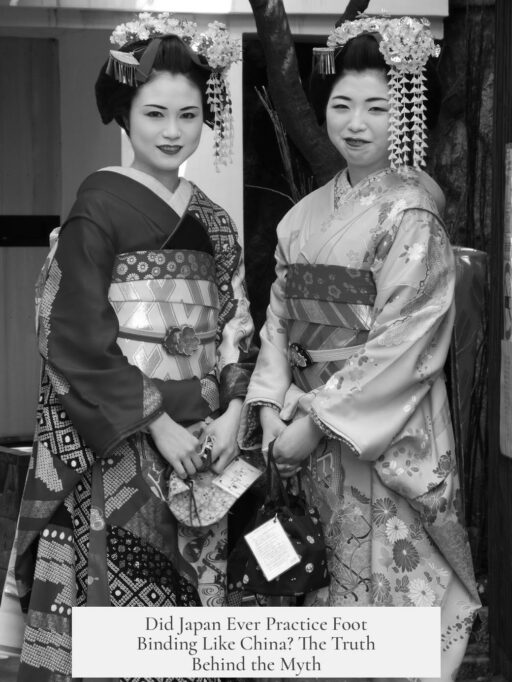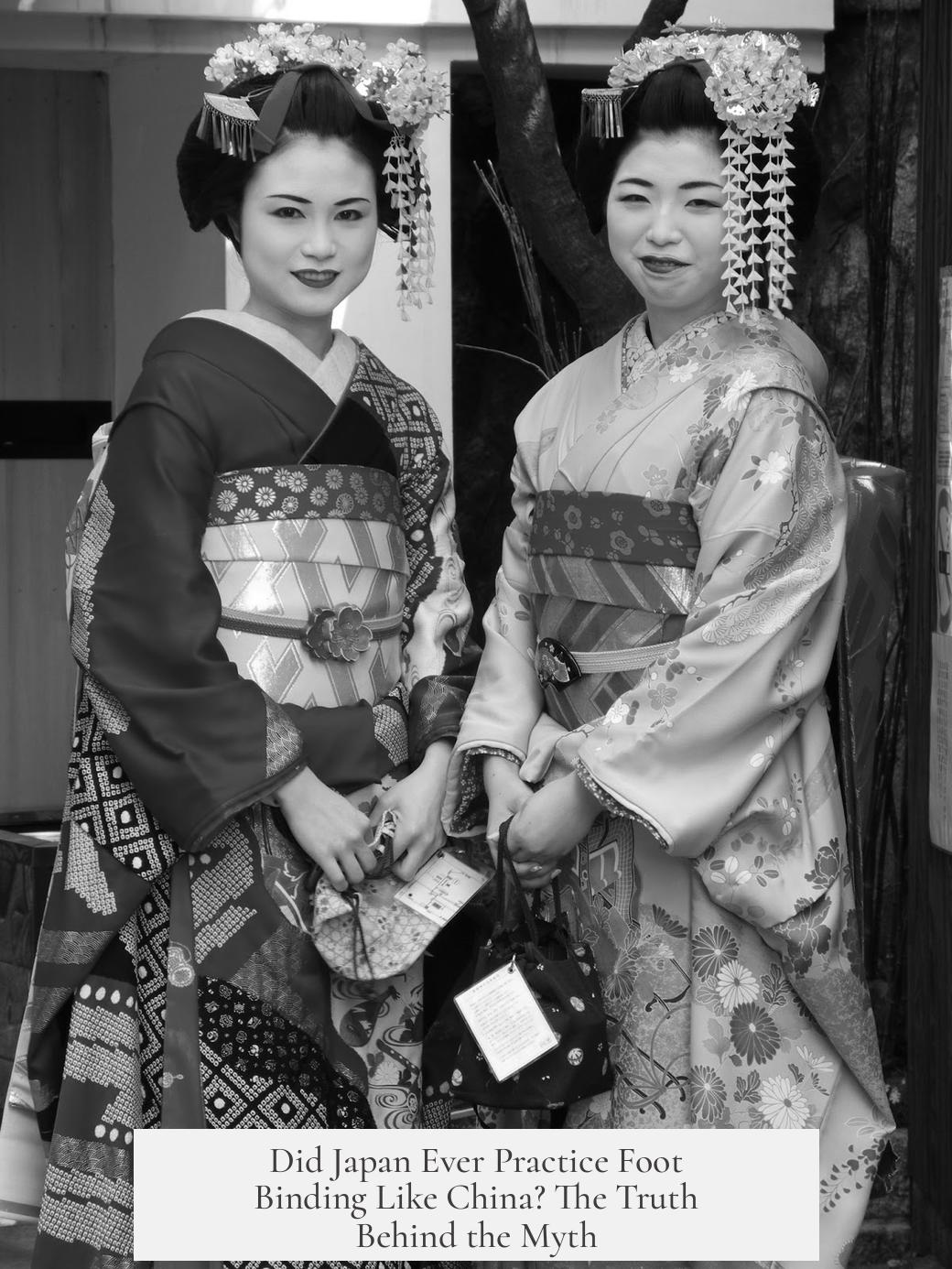Foot binding never took root in Japan, including among geishas or other isolated groups. The practice is uniquely Chinese, dating back to the Song Dynasty (12th century), long after Japan developed distinct cultural and fashion traditions independently.
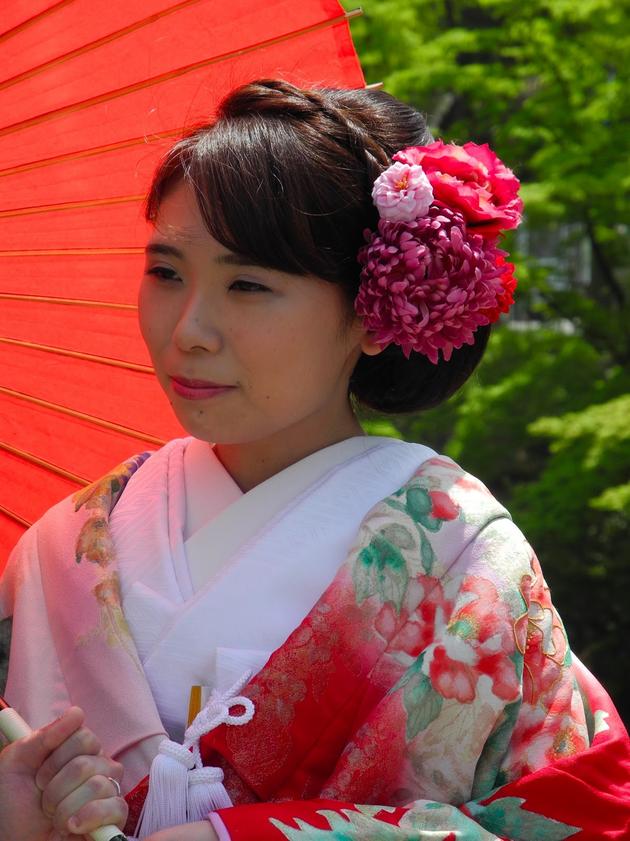
Japan absorbed many aspects of Chinese culture during the Tang Dynasty (7th–10th centuries), especially in court rituals and dress. Yet, foot binding started in China later, during the Song Dynasty. By then, Japan had embraced isolation in fashion development, not following Chinese trends like foot binding.
Instead, Japanese women’s footwear evolved differently. During the Heian period (794–1185), court ladies wore shitauzu: white silk substitutes for stockings tied at the top. Common women mostly went barefoot or wore simple straw sandals without socks.
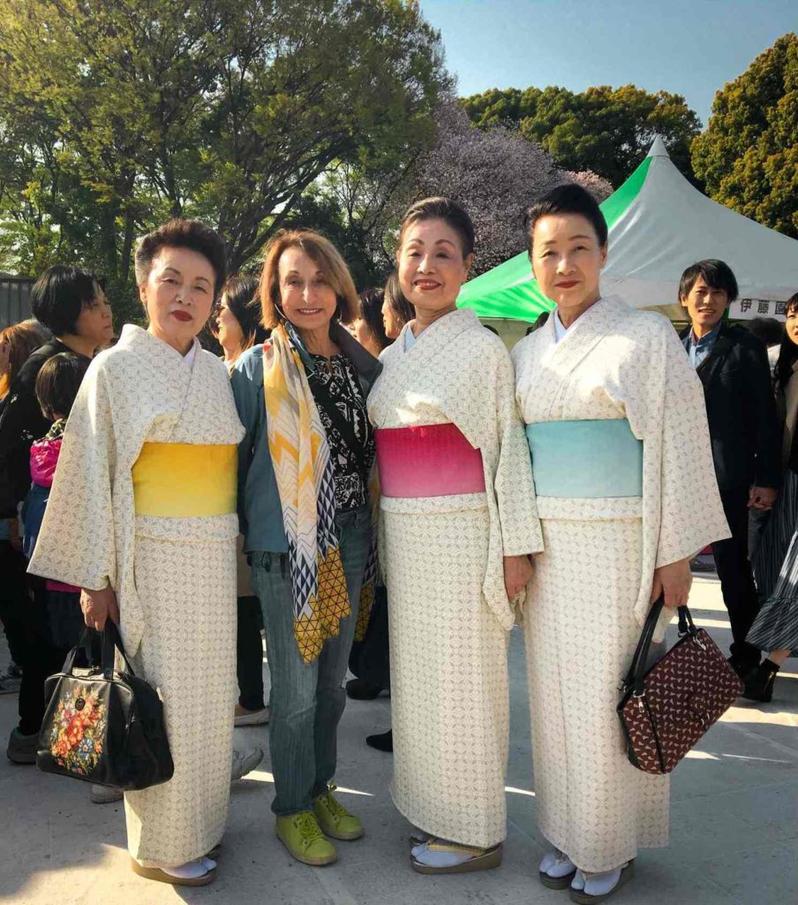
By the 15th century, Japan developed the tabi, a distinct ankle-high cloth sock with a separation between the big toe and other toes. This design suits traditional footwear like geta (wooden platform sandals) and straw sandals. Notably, geishas and fashionable women wore crisp white tabi, deliberately displaying their separated toes rather than concealing them.
This contrasts sharply with foot binding’s goal of making feet appear tiny and narrow. British traveler Isabella Bird commented negatively on tabi, saying they made feet look awkwardly large. Yet, this style remained central to Japanese dress.
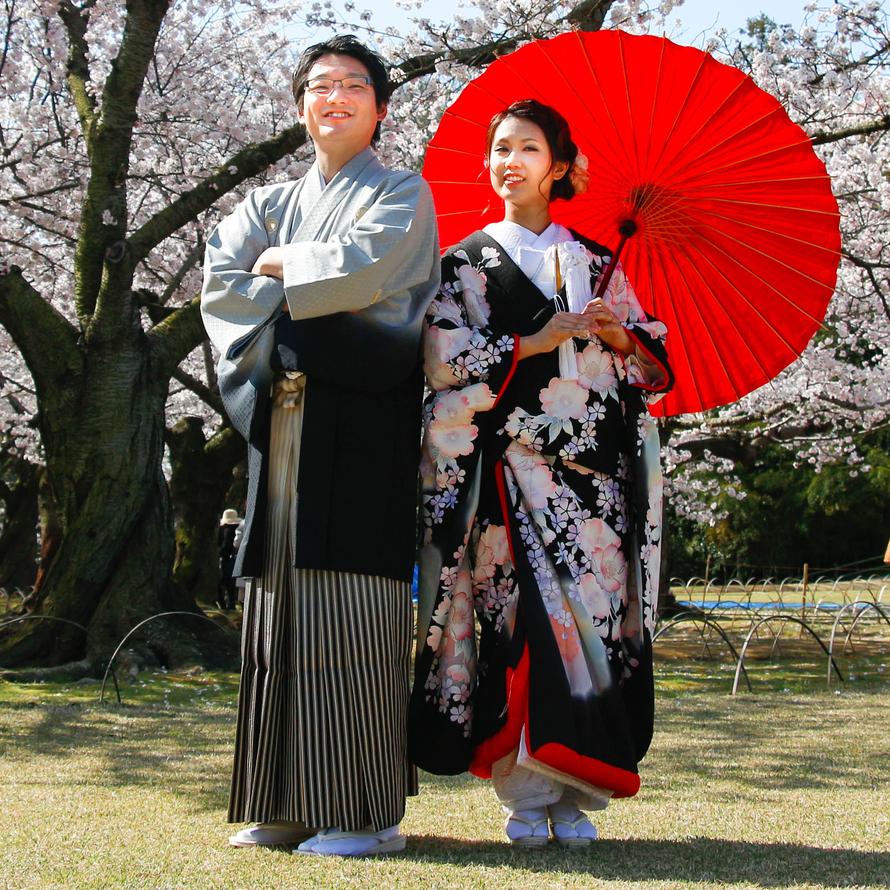
Japan’s cultural approach was so distinct that when Japan colonized Taiwan in 1895, it actively suppressed foot binding there, branding it a backward Chinese practice. This reinforced Japan’s stance as modern and humane in contrast to China’s tradition.
| Aspect | China (Foot Binding) | Japan (Footwear) |
|---|---|---|
| Origin Period | Song Dynasty (12th century) | Heian period and later (8th–15th century) |
| Practice | Binding toes tightly to alter foot shape | Development of tabi socks, showing toes separately |
| Social Groups | Elite women in China | Geishas and court women in Japan |
| Cultural Influence | Deeply embedded in Chinese customs | Independent evolution, resisting Chinese fashion post-Tang |
- Foot binding is historically absent in Japan.
- Japan’s footwear, including tabi, emphasizes toe separation.
- Geishas showcase their natural foot shape, opposed to binding.
- Japanese isolation in fashion began before foot binding arose in China.
- Japan’s colonial policy suppressed foot binding in Taiwan to promote modernization.
Did the Japanese Ever Practice Foot Binding? Unraveling the Mystery
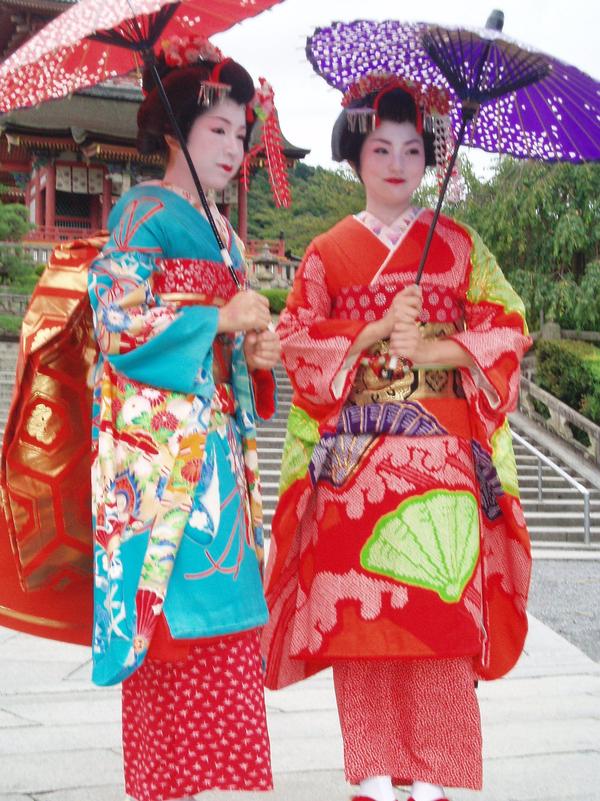
Foot binding, a cultural and physical phenomenon famously rooted in China, has never had a foothold in Japan—even among geishas. Yes, it’s a bold claim to make! But if you’re picturing dainty geishas hobbling around with their toes crushed, think again. The Japanese took a very different path for their feet, one far kinder and unique in its elegance.
So, why is foot binding absent from Japan—especially when China and Japan share so much cultural exchange? And how did Japanese footwear evolve to emphasize a very different aesthetic? Let’s dive in.
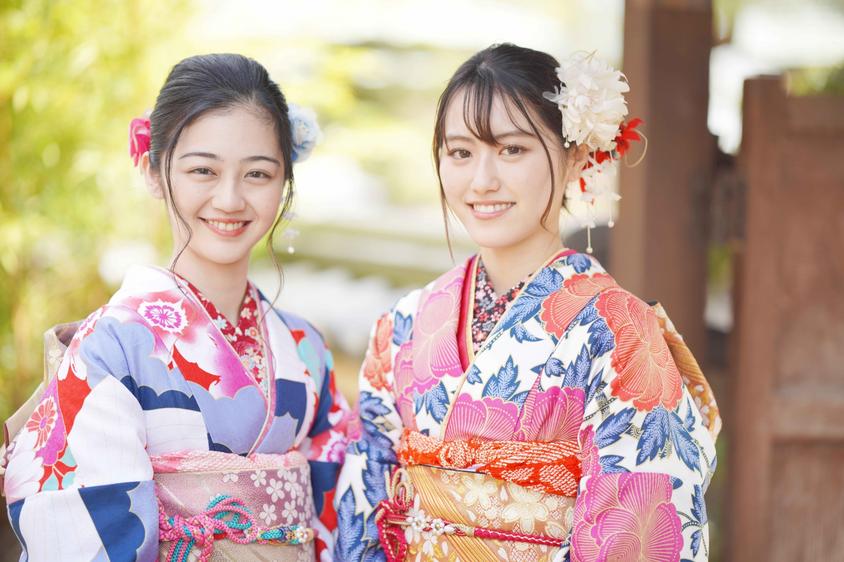
The Tang Dynasty Influence and Japan’s Fashion Divergence
Japan borrowed heavily from Chinese culture during the Tang Dynasty (618–907 AD). This period saw an influx of Chinese court culture, art, and fashion styles into Japan. But—and here’s the kicker—the notorious foot binding emerged much later in Chinese history, around the Song Dynasty (960–1279 AD). By then, Japan was already looking inward, cultivating its own fashions with limited external influence.
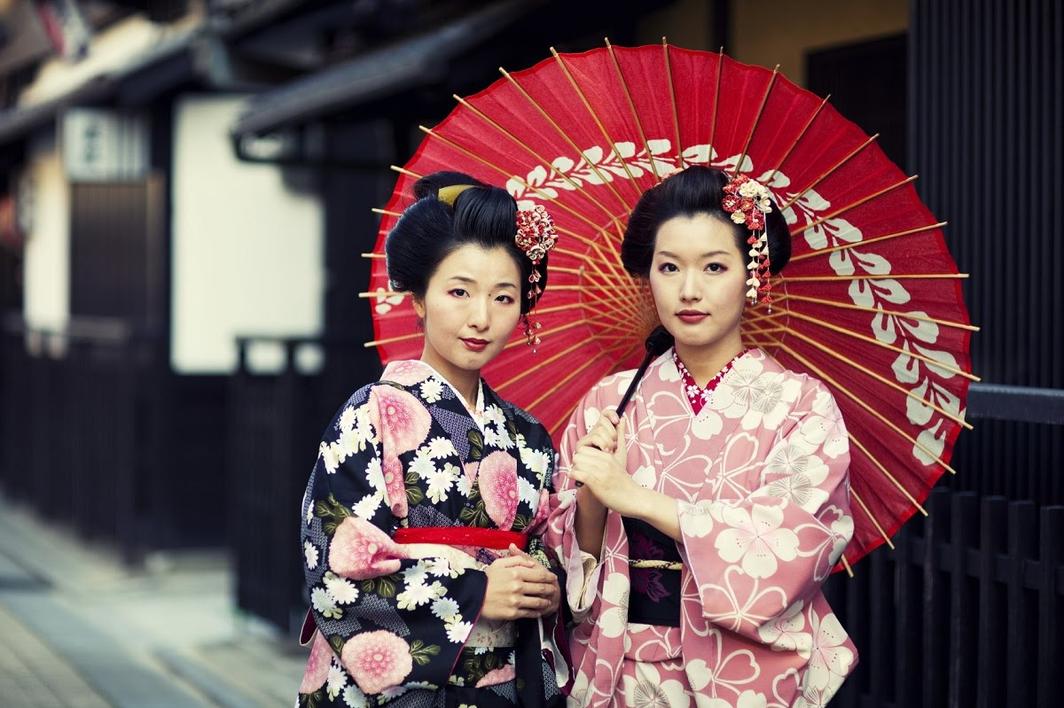
This timeline matters. Foot binding didn’t originate until the 12th century—long after Japan diverged from Chinese court culture influences. Japan’s style choices had settled into their own groove, minimizing any chance of adopting this painful and restrictive practice.
Japanese Footwear: Elegance with Room to Spread
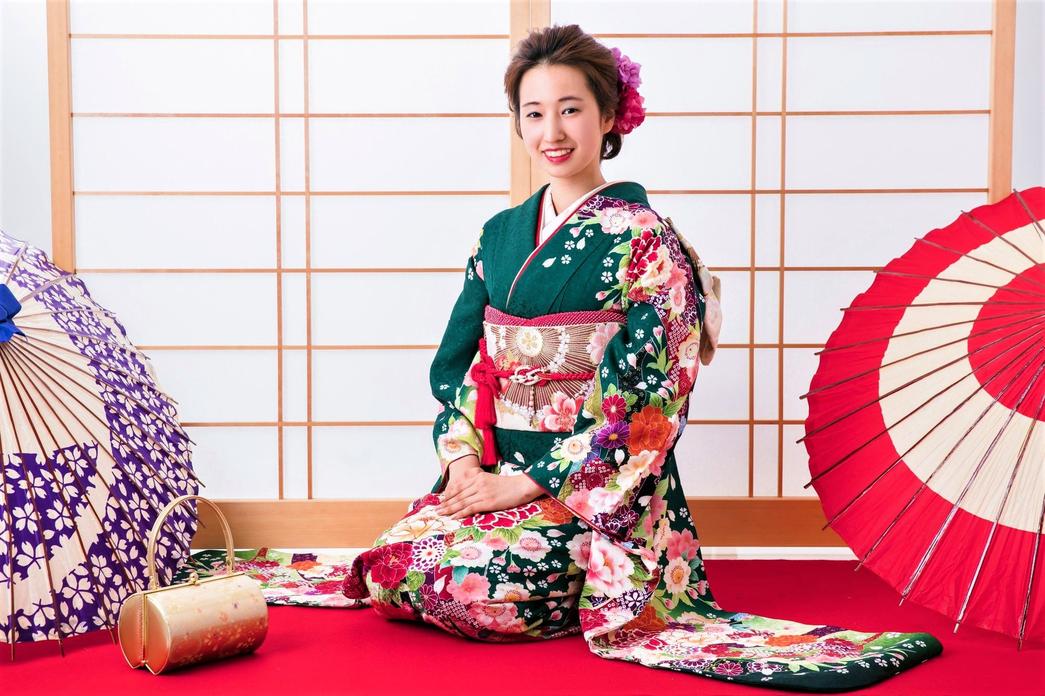
Rather than shrinking and binding feet, Japanese footwear styles actively celebrated the natural form, toes and all. During the Heian period (794–1185), elite women donned shitauzu, white silk stockings secured by drawstrings. For the common folks? Bare feet or simple straw sandals sufficed.
Fast forward to the 15th century, and Japan crafts an innovative footwear piece: the tabi. These ankle-high cloth socks feature a split between the big toe and other toes. This ingenious design allows easy wearing of straw sandals or geta, that iconic wooden platform sandal.
So, here’s the fascinating part: geishas and fashionable women wore crisp white tabi, which prominently display the toes rather than hiding or constricting them. The aesthetic showcases freedom and elegance, an entirely different story than the closed, painfully reshaped feet from foot binding.
Even Victorian traveler Isabella Bird commented on Japanese footwear. She called tabi “foot mittens,” noting they make small feet look “big and awkward.” Despite her critique, it testifies to how distinctive and literally toe-friendly Japanese feet fashion was.
Curious Case: Foot Binding in Japanese Colonies
While Japan itself never practiced foot binding, the colonial twist adds a provocative angle. When Japan took control over Taiwan in 1895, they saw foot binding there and positioned themselves as modern, enlightened rulers. Japan’s “campaign” against foot binding was part political theater and part genuine effort to portray a contrast to what they depicted as Chinese tradition’s “ancient ignorance.”
This colonial episode makes it clear: Japan consciously rejected foot binding. Their protest against it in Taiwan underscores how alien the practice was to Japanese cultural norms.
Why No Foot Binding Among Geishas or Other Japanese Women?
If foot binding had been around in Japan, wouldn’t geishas have adopted it to enhance their allure? Surprisingly, no. The entire geisha aesthetic revolved around grace but celebrated natural feet. The tabi perfectly complements their poise, allowing a balance of beauty and mobility.
In fact, the split-toe design provides not just style but function. It makes wearing sandals stable and comfortable—not easy if feet were crushed or deformed! The design even influenced modern footwear like the Nike “Air Rift,” inspired by tabi.
So, rather than diminishing feet, Japanese culture nurtured footwear that respected natural anatomy.
Summary: The Foot Binding Myth Bust
- Foot binding is exclusively Chinese, emerging in the Song Dynasty. Japan never practiced it.
- Japan’s footwear evolves independently, focusing on utility and natural foot shape.
- Geishas wore tabi, showcasing, not hiding, toes.
- Japan’s colonial efforts in Taiwan explicitly opposed foot binding.
- The split-toe tabi embodies Japanese footwear philosophy—elegant and functional.
The next time someone wonders if Japanese geishas tiptoed around with bound feet, you can confidently set the record straight with your newfound knowledge. Japan embraced the foot’s natural beauty, making foot binding an alien concept from the start.
Final Thoughts: What Can We Learn?
This journey into footwear history illustrates that cultural paths can diverge dramatically, even between neighbors with shared influence. Why did Japan reject foot binding while China adopted it? Perhaps it’s about differing values: one culture emphasized a constrained ideal, the other celebrated natural function.
Could this difference inspire modern fashion? Imagine footwear that honors form and movement—like Japan’s tabi—over restrictive trends. It’s a lesson in respecting natural design, whether in feet or life.
Answer me this: If given a choice, wouldn’t you prefer to wear shoes that let your toes breathe and wiggle freely rather than bundled up like sardines?
Did foot binding ever become popular in Japan like it did in China?
No, foot binding was never practiced in Japan. The Japanese developed a different footwear tradition that did not include binding the feet.
Did any Japanese groups, such as geishas, adopt foot binding practices in isolation?
Japanese geishas did not bind their feet. In fact, they wore white tabi socks that highlighted their toes rather than hiding or altering them.
How did Japanese footwear styles differ from Chinese foot binding customs?
Japanese footwear included items like straw sandals and tabi socks with a separation for the big toe. This style emphasized flexibility and toe spread rather than altering foot shape.
When did foot binding begin in China compared to Japanese fashion trends?
Foot binding began during China’s Song Dynasty in the 12th century. By then, Japan had already developed its own closed cultural fashion and was not influenced by this practice.
Did Japan ever try to influence or change foot binding customs in regions it colonized?
Yes, when Japan took over Taiwan in 1895, it campaigned against foot binding there, promoting itself as modern and enlightened versus traditional Chinese practices.
